Introduction
The COVID-19 pandemic was one of history’s most significant events. Since 2020, almost every facet of human life has been severely affected by it.
But with time, certain industries, such as tourism and travel, are gradually returning to how they were before COVID-19. As far as technology and business sectors are concerned, they have to adapt and change how they function.
One of the major changes is reducing physical operations and shifting toward the digital world. Enterprises are being required to move away from the typical office environment and toward more remote working methods.
It goes without saying that many of these organizations are having a hard time adjusting to these changes. The biggest challenges include, among others, monitoring remote employees and keeping an eye on their productivity.
If you also find it challenging to monitor your remote employees, you have landed at the right place. This article will discuss the 6 most effective ways to monitor remote employees.
Not only will we discuss these 6 best ways, but we will also go through the pros and cons of monitoring remote employees.
Before going on to these, it’s first essential to understand what exactly remote employee monitoring is and why it is considered to be necessary.
So without any further ado, let’s dive into it.
What Is Remote Employee Monitoring & Why Is It Important?

When we talk about remote employee monitoring, we are talking about how employers can monitor what their employees are up to while working remotely and not from the offices.
Employee monitoring can include basic checklists, activity monitors, and more sophisticated tools for that purpose.
Monitoring remote employees are considered very important and beneficial for the organization. Firstly, it helps in making sure higher productivity is achieved.
The reduction in productivity levels is undoubtedly a significant issue with the shift to remote work environments. In the past, companies actively tracked workers’ advancement and kept an eye on their activities. By doing this, employers could guarantee that goals were achieved and that output was increased. This has changed now.
With that being said, by using premier software such as VoicePing, employers can ensure higher productivity levels are achieved.
In addition to this, remote employee monitoring can help in avoiding data breaching as well. A report claims that in 2017, Deep Root Analytics disclosed about 200 million voters’ information online. Remote employee monitoring is one effective technique to prevent data breaches, which have eventually become widespread in many organizations.
Furthermore, remote employee monitoring would also allow for maintaining discipline. Once they know they are being watched, your employees carefully take their jobs. This step is incredibly important in monitoring remote employees because it reduces the likelihood of wasting time.
Now that we know what monitoring remote employees is and why it is considered to be vital let’s discuss some of the most effective ways of remote employee monitoring.
Best Ways For Monitoring Remote Employees

You can easily and effectively monitor your employees working remotely in several ways. Follow the below-mentioned ways, and you will be able to monitor your employees in the best manner possible.
1 Creating Tasks List

The number one way of effectively monitoring remote employees is through creating task lists. There is no denying the fact that this strategy is a very simple and easy one to implement.
Task lists can be useful in concentrating on the specific tasks given to individuals instead of large-scale projects. They have great and major advantages, such as the ability to identify unevenly allocated projects.
For instance, it can highlight that a particular employee has been responsible for many tasks, ultimately impacting their productivity levels.
After identifying that, you can reallocate the tasks and reduce the workload from that employee. The same can be done in situations where you get to know that certain employees are doing very less or even no task.
You can balance things and assign tasks to employees that they can manage without any issues.
Additionally, there is an issue with implementing task lists to keep track of remote workers. To begin with, you’ll require some method to assess the comparative load of every work because none of these tasks will require the same effort.
For example, if someone is doing three tasks at a time and another employee is doing just one task, the latter may have less responsibility.
However, the one task another employee is doing may require more effort than those three combined tasks. Here, creating a task list may not be beneficial.
2 Using Task Management Apps
If you are looking for a more effective and beneficial approach to monitoring remote employees, using top-notch task management apps can be an excellent option for you.
Although there are many task management apps, all of these have a similar objective: assisting your organization in managing, organizing, and assigning tasks linked to different projects.
A project manager will create a new task in a task management app as soon as you receive one. Once that is done, they will appoint staff members to start working on it.
The best thing is to log into the app whenever you want and check which staff member is appointed to do the task. This way, you will also be able to identify those employees who must be assigned more tasks or those from whom the responsibility of tasks must be reduced.
Although task management apps are fantastic in assigning and monitoring employees concerning different tasks, they have specific problems. For instance, they frequently ignore staff activities unrelated to a certain project.
These apps can help you make things more efficient, but there are better ways of assigning and monitoring your employees than these.
3 Encouraging Self-reporting
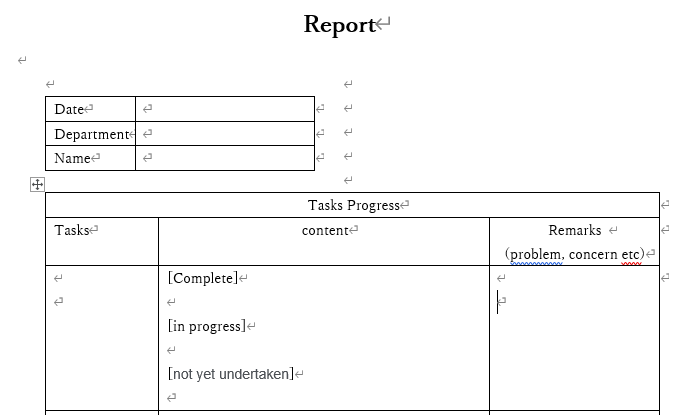
If you trust your employees and believe that your staff will never lie or hide anything from you or the supervisor. In that case, a culture of self-reporting can be a phenomenal way of monitoring the work of remote employees.
That said, we recommend following this approach when you have a small workforce. You can, however, implement this strategy where the number of employees you have is less.
Now how can you do that? Well, you can ask all of your remote employees to email you or the supervisor a report. That report can include the number of specific tasks they did, how many objectives they have achieved for the day, and various things. They can also include which project they have been assigned.
If you want to increase their morale and make them feel more connected, you can also ask them to mention in the report what they think about the organization and whether they can manage their workload. This way, your employees will become more honest and trustworthy.
This is helpful since it enables your remotely working staff to decide for themselves. They can tell if they are overburdened or if they need more tasks.
With that being said, this also has certain issues associated with it. This gives some leeway for misrepresenting the responsibilities and workload they have. For that reason, having an objective type of assessment separate from this method is a smart option, regardless of how much you trust your staff.
4 Using Time Tracking Software
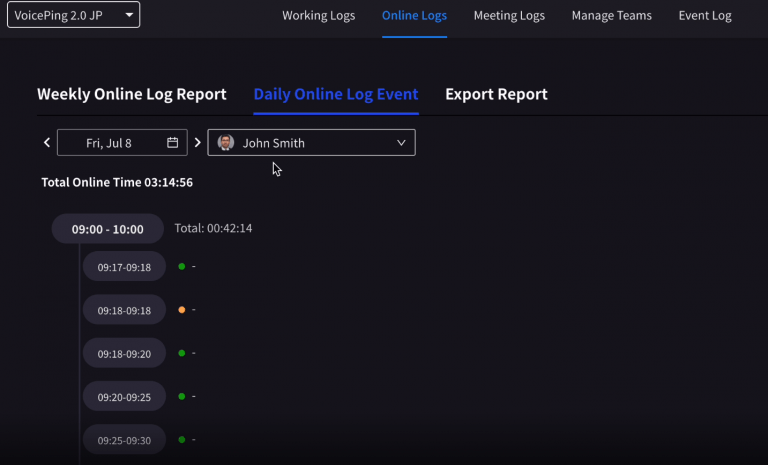
The next amazing approach is to monitor how your company staff members consume their time during the day using time-tracking software. These time-tracking tools typically urge your staff to switch on and off integrated timers as necessary every time they initiate a new project or work.
How you approach, this solution might require your staff members to apply it for every type of task or just a specific set of them. For example, particular tasks can only be done with the time being tracked for them. In fact, not tracking time for such tasks may further create issues for your employees and you.
The fantastic thing is that you’ll be capable of logging in and monitoring how your staff members spend their time, determining who is free and which employee has the most tasks.
But, this approach has certain drawbacks as well. For instance, time tracking is not always the best way to monitor and keep a check on things such as unscheduled meetings and phone calls. Along with that, there are always possibilities of your staff falsifying the time they are using.
5 Tracking Email Activities Of Employees
Unquestionably, employees nowadays tend to spend a lot of time checking and sending emails. This means that most of their time is wasted just in their email box. That time can be utilized in some other work activity that may further help boost productivity.
Not only do they spend a lot of time there, but many employees tend to engage in useless activities in their email boxes. Therefore, monitoring your remote employees by tracking their email activities is vital.
You can do that using some great tools that can help you analyze your employees’ emails and provide you with the exact date on which employee is doing what. This will enable you to quickly identify team members who are the most occupied and aren’t performing, as well as how you can adjust duties to increase efficiency and productivity.
In addition, these wonderful email tracking tools would also give you updates regularly about the email activities of your remote employees. This would further make things easier and more convenient for you to manage. Isn’t that remarkable?
Another great thing is that none of your employees’ involvement would be required while doing all this email activity tracking. You can check what your employees are doing without them knowing about it. But this, however, can create certain legal issues, which we will discuss later on.
6 Implement Managerial Supervision
This fantastic approach is somewhat similar to the one we discussed regarding self-reporting, however, with one major change. Here, the specialist supervisors or the senior managers would be responsible for providing information about an employee’s workload instead of the employees doing it alone.
Not only will these supervisors check and monitor the remote employees’ activities, but they will also assign them tasks whenever necessary. They will be allowed to combine any number of staff activity tracking software or tools as they deem fit and give them the resources they require to achieve the objectives successfully.
This is one of the best ways to manage those cases where you have a massive workforce. Also, it can be helpful if you have issues about trusting your employees.
If you think empowering the supervisors will prove to be much more effective than giving responsibilities directly to the employees, this approach is ideal for you and your organization.
Pros & Cons Of Monitoring Remote Employees
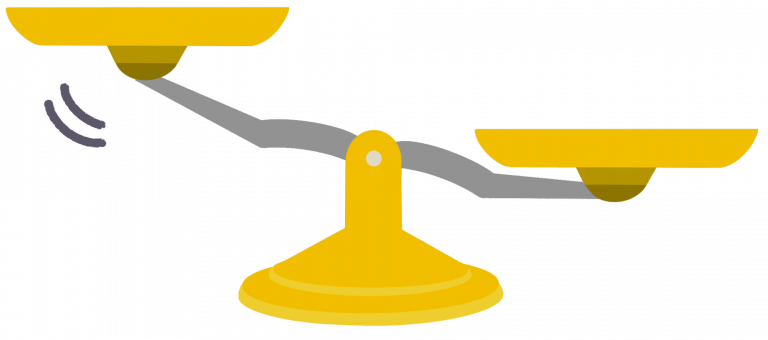
Pros
There are various amazing advantages you may get by monitoring remote employees. Following are a few of these:
1 Accountability
Oftentimes it happens that some remote employees tend to become irresponsible and do not hold themselves accountable when they are working from their homes. They do this as no one is monitoring them or keeping an eye on their activities.
Remote employee monitoring eliminates such issues; therefore, holding staff accountable is certainly the main advantage of remote monitoring. In addition to knowing how much work remote workers are doing, employees become more responsible when they realize that they are being monitored. They do not engage in those types of activities that may ultimately cause issues for them.
2 Employee Recognition
How often does it happen that some employees are overvalued while others are not given the right amount of recognition or appreciation they truly deserve? This certainly happens in almost every organization, particularly in the case of remote employees.
Many of them may be doing top-quality work and are very punctual about their duties, but they are not given recognition because their work needs to be monitored correctly.
Tracking productivity and determining who is working effectively are both made simpler by remote employee monitoring. This way, you will be able to know which employee is putting in more effort and will appreciate them for that. As a result, the employee’s motivation levels will increase, and they will be able to perform better.
3 Avoid Burnout
As we have mentioned before, in many companies and organizations, certain employees are given very few tasks. At the same time, some are made responsible for a massive amount of work. This increase in workload can impact your employee’s mental and physical health.
However, the ideal way of eliminating this issue is through monitoring your remote employees. Monitoring and managing them through premier software such as VoicePing can help you identify which employee is overburdened.
Once you have an idea as to which employee is doing a lot of work, you can reduce their responsibilities and assign tasks to other staff members, especially those who don’t have a lot of work on their to-do list.
4 Enhanced Processes
Organizations may benefit from remote monitoring by understanding corporate activities more and identifying the particular and necessary system changes.
Remote monitoring can reveal which departments in the organizations are doing well, which are not, and how much time is usually wasted each day by staff members. It can also identify which resources are being efficiently employed and which are not.
Once the loopholes are identified, the senior management can make changes in the operations and further enhance the processes.
Cons
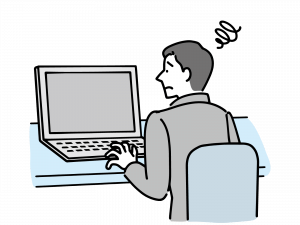
There are so many advantages of remote employee monitoring, but there can also be some disadvantages. Following are a few of these:
1 Impact Morale Of Employees
Remote employee monitoring can have a detrimental effect on the morale of the employees regardless if you comply with all the legalities and have gained permission from employees for that purpose.
Employees may think that their boss and the management only really believe them if they get to know that their conduct is being monitored. That affects connection and does not give them a good impression of the organization they are working in.
2 Legal Issues
Remote employee monitoring poses legal severe issues if not carried out appropriately and in the right manner. The Electronic Communications Privacy Act of 1986 (ECPA) disallows certain activities, and monitoring as well as collecting certain information comes under that.
Organizations may break privacy laws if they unintentionally get sensitive information regarding an employee. This may further create serious legal problems for the organization and may give a wrong message to other employees and customers regarding the business.
3 Increase Employee Turnover
Monitoring remote employees can also create other major issues for the organization and increase the employee turnover rate. If certain legal issues arise due to the monitoring of employees, this will indicate that the company does not care about its workers. Also, many employees prefer to be monitored only some of the time, as this can make them feel that their privacy is being disturbed.
All of this, as a result, will force people inside the organization to leave and find other opportunities. Not just that, but it will also make other new applicants reluctant to apply for the jobs inside the company. However, all of these issues can be mitigated if monitoring remote employees are done correctly and in a better manner.
About VoicePing Software
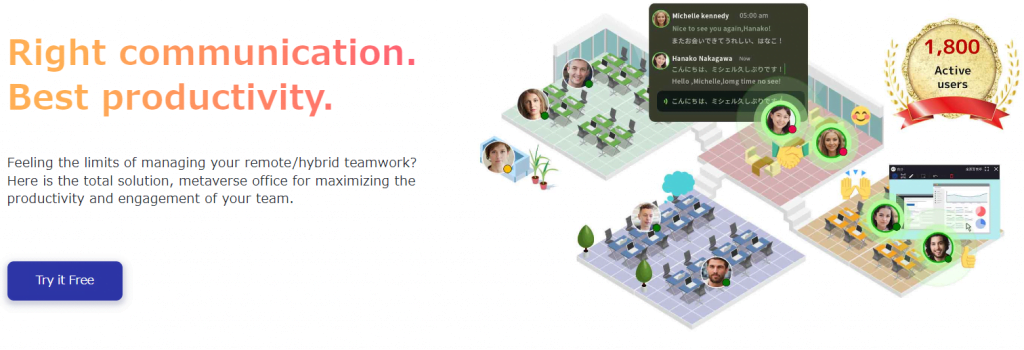
VoicePing is a top-rated software that allows organizations and companies to boost their productivity levels through efficient management and monitoring of employees.
This premier software offers several amazing features to organizations and managers. These high-quality features may include Workspace Function Management, Multi-floor Operation, Productivity Management, Office Customization, and Event Lot.
Not just these, but there are various other phenomenal features offered by this software as well. All these allow companies to increase their output and achieve their objectives without issues. Suppose you are serious about improving your organization’s productivity levels and want to manage your employees in the best manner possible. In that case, VoicePing can be the ideal software for you.
Conclusion
There is no denying that the ideal approach to keep your company productive, even when your staff is working remotely, is through remote employee monitoring.
Remote employees tend to concentrate harder on their tasks and refrain from unneeded distractions in situations where they are aware that they are being watched at all times.
Although it is impractical for someone to watch their staff at all times actively, solutions like VoicePing greatly assist in monitoring employee performance. Certainly, it is one of the best, most effective, and at the same time, efficient ways of monitoring remote employees and boosting their output.
